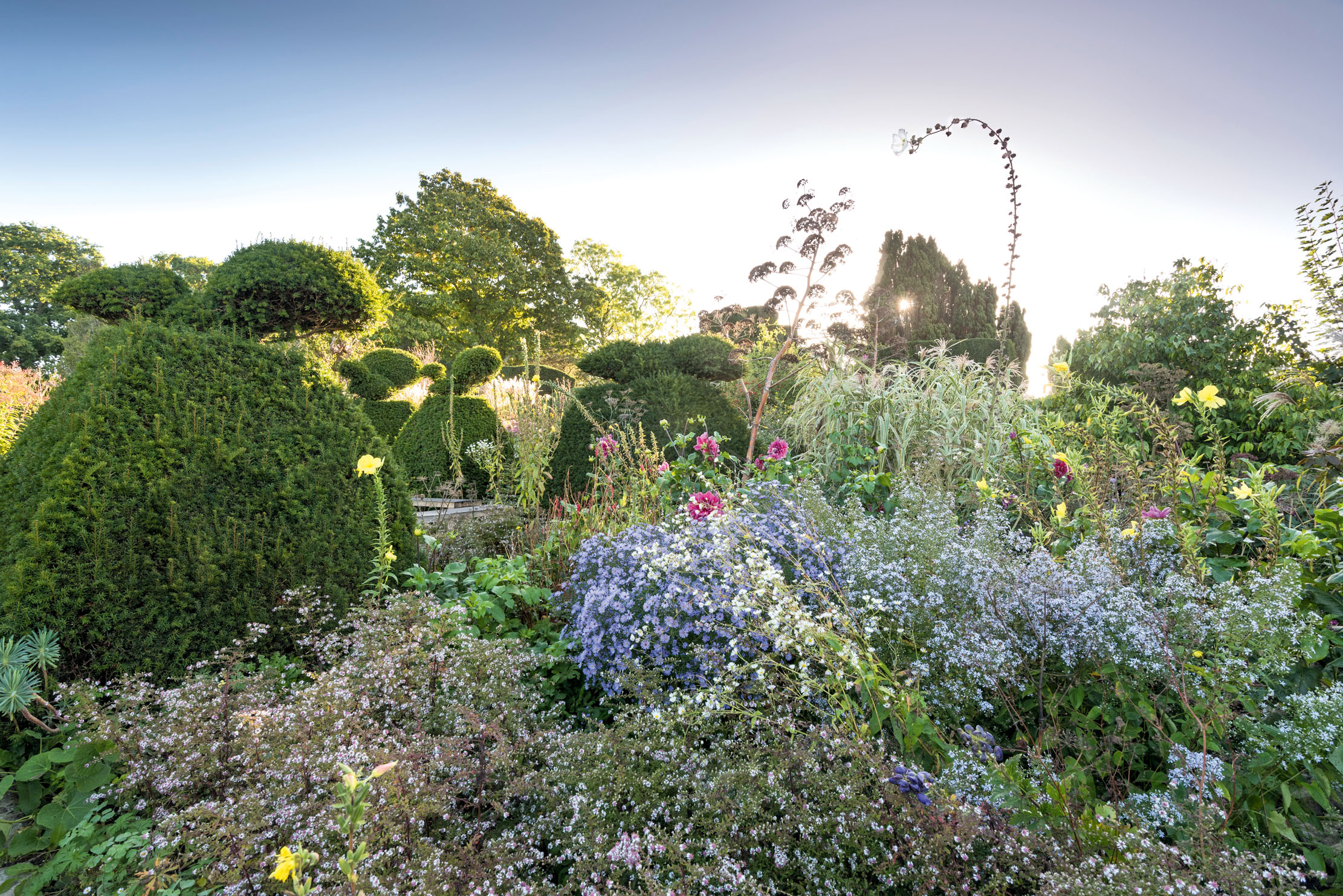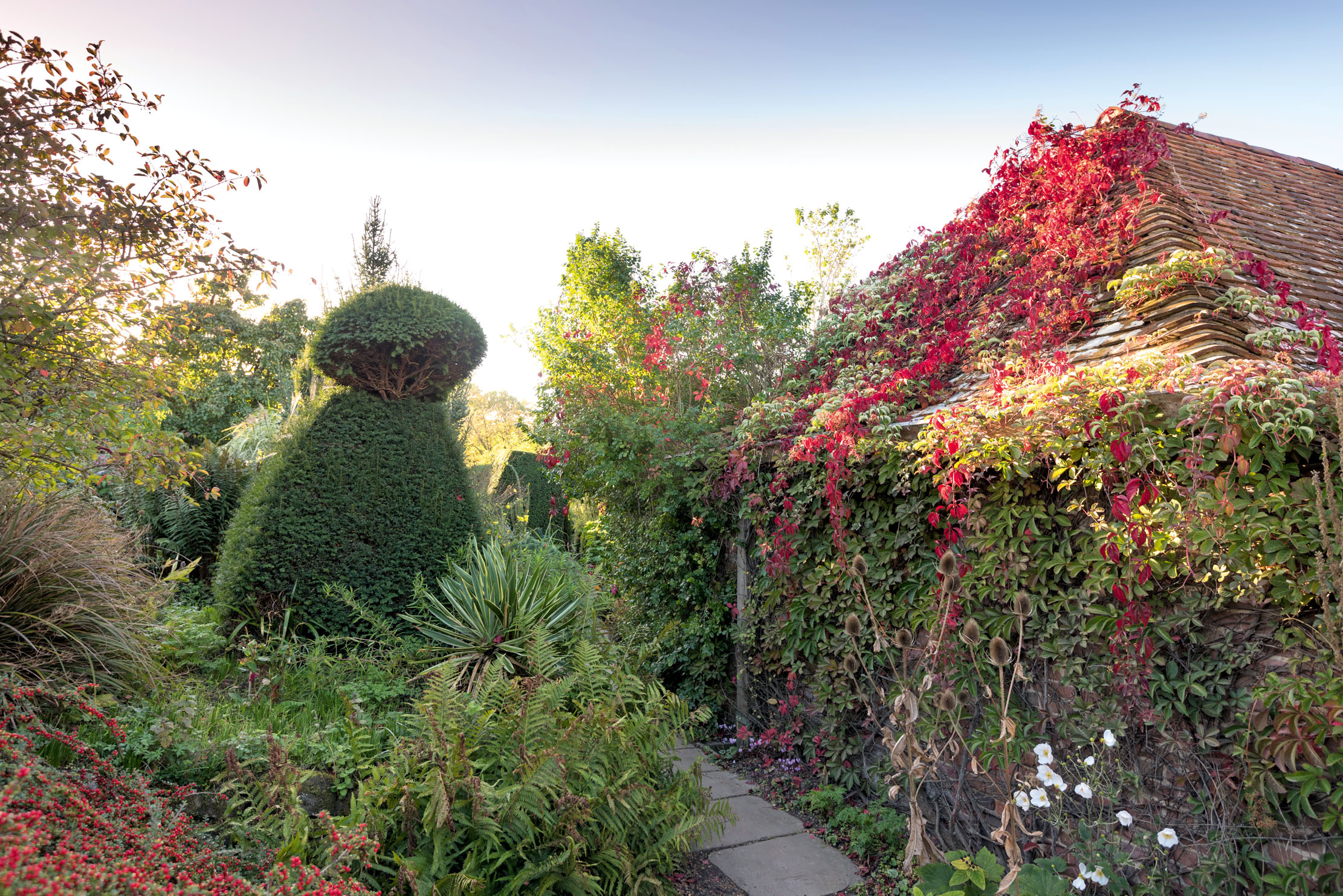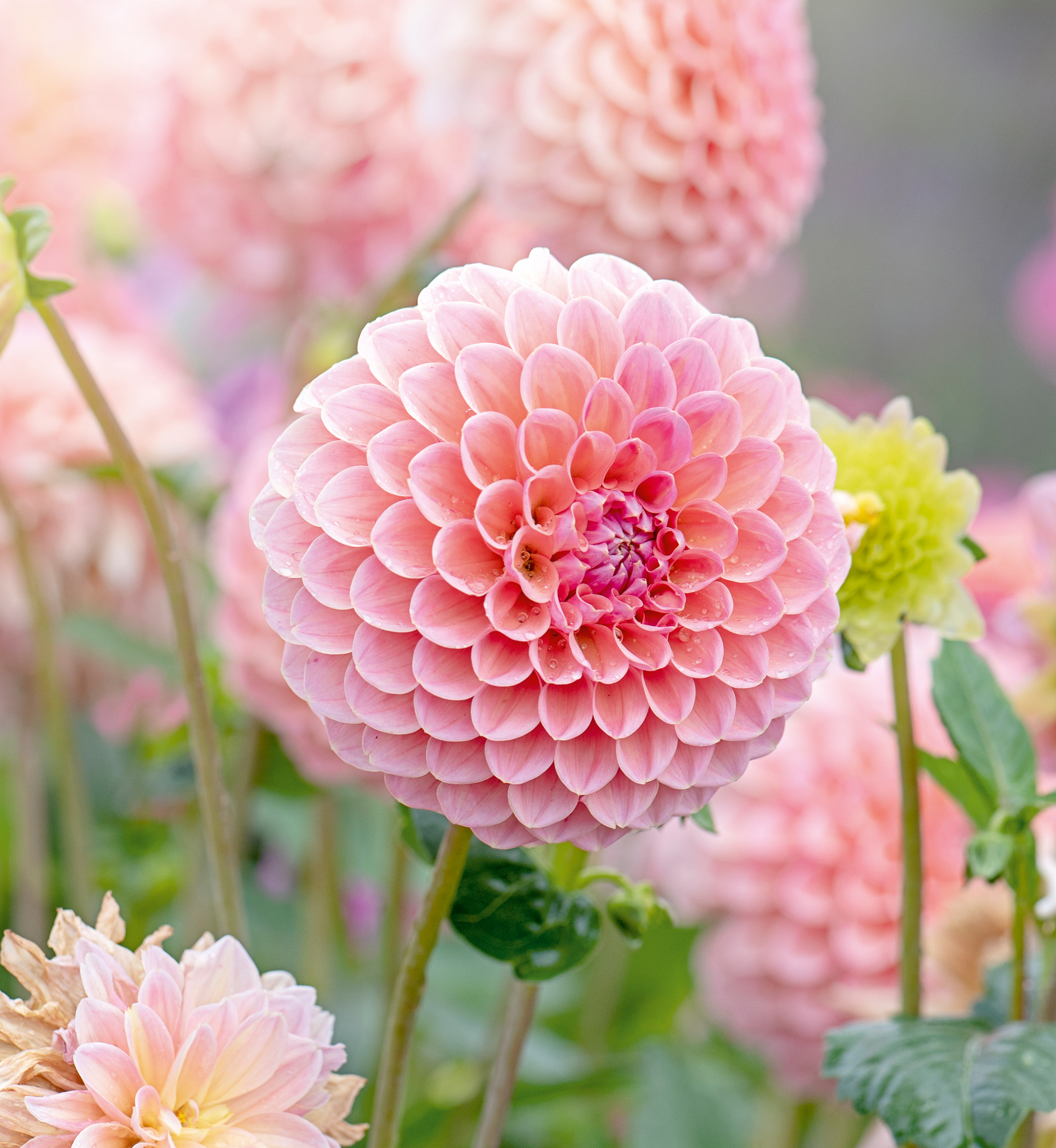The gardens at Great Dixter: How Christopher Lloyd's labour of love lives on
The swashbuckling dahlias still thrill in the late, great Christopher Lloyd's at Great Dixter — in Northiam, East Sussex — but Mary Keen, a lifelong friend of this incomparable spot, is equally impressed with how the garden has evolved in the care of Fergus Garrett.

A little over a decade ago, the Heritage Lottery Fund granted the sum of about £4 million to Great Dixter Garden. At the time, the naysayers, led by Sir Roy Strong, protested that no garden could be kept in perpetuity. Others, who had enjoyed Christopher Lloyd’s weekly column on these pages for nearly half a century, imagined that it was his personality that made the garden what it was. Without Christo, Dixter could not be Dixter. But, before he died, the great man wrote that he did not want the place to be a museum. ‘The garden will change, it has changed a lot in my time,’ he wrote, adding that, ‘as long as Fergus is at the helm, I have no fears for Dixter.’
Great Dixter is a way of life with gardening at its heart. For Christo, and now Mr Garrett, it is for gardening, real innovation and best horticultural practice. And some.
‘We try to bring creativity into everything,’ Mr Garrett says, ‘but also the importance of community, the importance of kindness and the importance of a responsibility to the next generation. Christo once said to me: “I’m giving you everything, so that you will be better than me and I expect you to do the same.” Thanks to him, I have a fantastic team of gardeners around me.’

Great Dixter still delivers the most exciting and instructive horticultural experience to be found anywhere in the British Isles. If you want to learn how to make a meadow, plant an all-year multi-layered border, grow tropical exotics or test conifers as ornamentals, Dixter is the place. If vegetables or annuals or topiary or compost or propagating plants for sale are what interest you, examples of how to master all these can be found there, too. And if East Sussex is too far away, anyone can learn from online lectures given by the indefatigable Mr Garrett. Best of all, if you are young, you can apply to live the Dixter life, as well as learning how to garden.
Training students and turning them into top-flight gardeners is invaluable work, which is funded by scholarships. Mr Garrett admits that teaching takes time and that because he likes to take ‘kids who have had no chances, who have had hard knocks’, the gardening must slow to their pace until they gain confidence. ‘You can’t train gardeners overnight,’ he observes, ‘then, when they are trained, you lose them. I’ve had people who couldn’t speak or look you in the eye,’ he adds, ‘but, by the end, they can take visitors around the garden. They have gained skills to be proud of and the teachers who once despaired of them are in tears.’

There is one scholarship connected to learning the nursery trade, which means researching composts — all made on site — or the best times for sowing or potting. Another scholarship involves a top horticulturist, John Massey of Ashwood nurseries near Dudley, West Midlands. Founded in memory of Adam Greathead, a promising young gardener who died very young when working for Mr Massey, the award gives the student the chance to work for six months at both Great Dixter and Ashwood. A further scholarship has been set up in partnership with Chanticleer Garden in Pennsylvania, US.
As a designer, I know how hard it is to find good gardeners for clients. The Great Dixter Charitable Trust is stretched to provide five places a year. More funds would mean more managers for all our important gardens and for clients who are so often disappointed by watching their beautiful designer borders diminished by lack of maintenance.
Exquisite houses, the beauty of Nature, and how to get the most from your life, straight to your inbox.

If teaching is important, so, too, is biodiversity. The Dixter garden is completely organic and increasingly sustainable. The first two years without spraying were, Mr Garrett admits, terrible until the natural balance was restored. Now he wants to water less and beds that used to be regularly irrigated are down to a couple of waterings a year.
The recent attacks on rewilding gardens from Alan Titchmarsh and Monty Don leave him unmoved. He believes there is room for bramble patches, as well as begonias: ‘It’s for the individual to choose. Dixter,’ he says, ‘will continue with its swashbuckling dahlias, cannas and bedding plants.’

Some of his weedier introductions to the Dixter garden have raised eyebrows: cow parsley or buttercups are allowed in cultivated areas, but nettles are not. Grass and border perennials are left standing until they turn brown, on which some visitors are not keen. ‘Large dahlias and marigolds displease the naturalistic gardeners — but Dixter continues to do its own thing.’ The biodiversity audit in the garden has surprised the ecologists, because there are twice as many types of insect in the formal borders as there are on the outlying estate. ‘They are suggesting Great Dixter should be a local nature reserve,’ says Mr Garrett, ‘because the numbers are so high and include several rare and threatened species.’
Here, the feeling is that the future of gardening should not be constructed around a choice of rewilding or highly maintained gardens. Instead, the statement should read ‘rewilding and highly maintained gardens’. The latest Dixter initiative will be called Sound Matters. This is aimed at encouraging gardeners to listen to the soundscape, to realise how much buzzing and birdsong there might be once biodiversity is restored in our own small patches.
Nothing I have written so far describes the plants that the visitor sees and not even the most talented photographer can convey the liveliness of the layout or the breadth of the Dixter experience. These pictures were taken last October, but the garden will not look quite the same this year. Whatever the season, there will be surprises. The bedding schemes are never repeated, the plants in the pots around the front door will change. Anna Pavord, who has been visiting for years, says: ‘It is always the same place. Always different.’ Or, as Mr Garrett puts it, ‘every day is really exciting. All the time’.

The answer to the question of whether this particular garden should have been kept, chucked or changed seems obvious now. Christo’s ethos, his way of life with gardening at its heart, is still going strong. Whether this can be kept up in perpetuity will depend on Mr Garrett’s successors.
My take home from Dixter is what Mr Garrett calls threading, repeating a plant by running it through a border. In May, it might be cow parsley, smyrnium or Beth Chatto’s pink poppy (Papaver dubium). These will be whipped away before seeding can start. Later, it could be an annual, such as larkspur or Persicaria orientalis. This technique lightens the look of a bed and makes it appear more natural.
I would also like to master the mind maps that Mr Garrett uses to increase efficiency in the garden, planning work as the weather dictates. They are beautiful objects, with Great Dixter the sun at the centre and arrows, like winds in mariners charts, pointing to the importance of tenets and task.
Great Dixter, Northiam, Rye, East Sussex (01797 252878; www.greatdixter.co.uk)

Credit: Alamy
Alan Titchmarsh: 'I treasure still the letters that I received from him, not simply for their horticultural content, but their companionship'
The gardener, writer and broadcaster Alan Titchmarsh reminisces about the gardening letters he's received — and despairs at the thought of

Carla Carlisle remembers Christopher Lloyd
In the lull between Christmas and New Year Carla fires up Iplayer and listens to her old friend Christopher Lloyd

Alan Titchmarsh: How the dahlia shrugged off its 'too common to plant' tag — and thank goodness it did
Alan Titchmarsh has always loved Dahlias — and he's all too glad that his fellow gardeners have seen sense in recent

